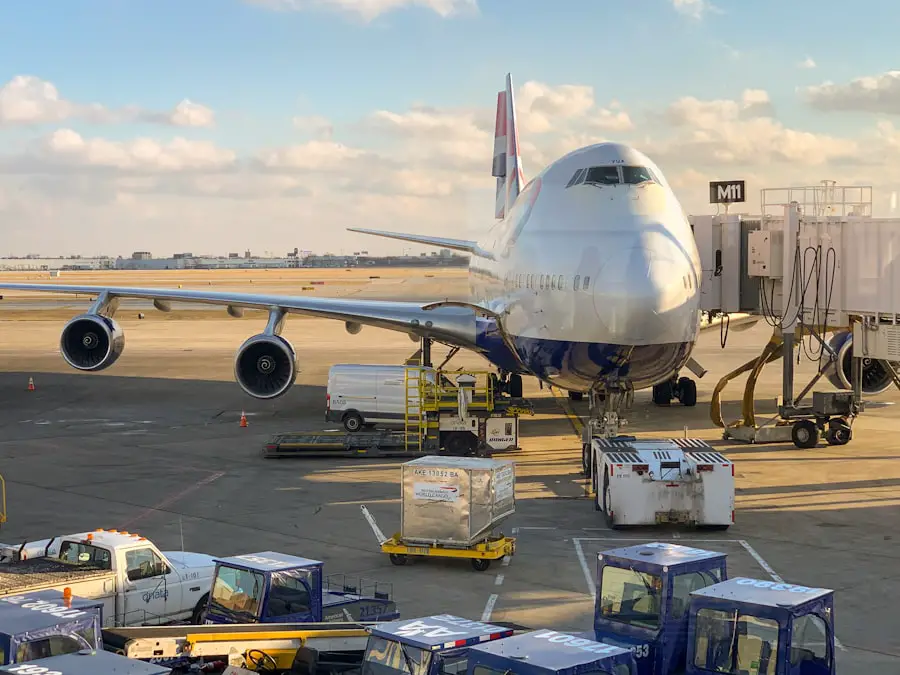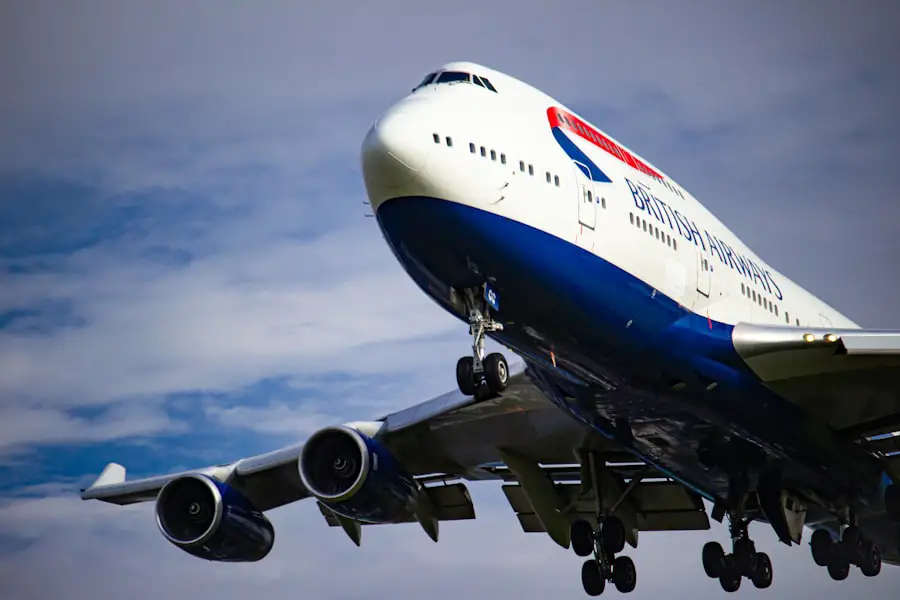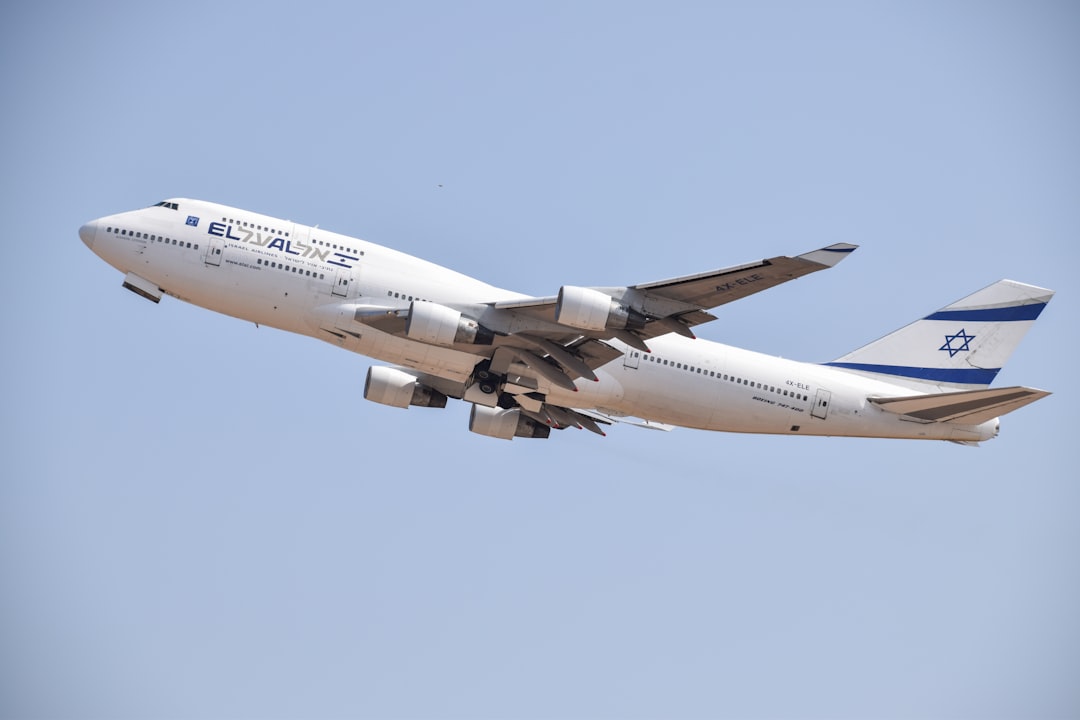In the realm of commercial aviation, speed is not merely a desirable trait; it is a fundamental necessity that shapes the entire industry. The demand for rapid travel has surged in recent decades, driven by globalization, increased business travel, and the desire for efficient leisure trips. Airlines are under constant pressure to reduce travel times while maintaining safety and comfort.
The ability to traverse vast distances in a matter of hours has transformed the way people connect, conduct business, and experience different cultures. Speed in air travel is not just about getting from point A to point B; it is about enhancing productivity, maximizing time efficiency, and meeting the expectations of a fast-paced world. Moreover, the importance of speed extends beyond individual passenger experiences.
Airlines that can offer quicker flight times often gain a competitive edge in the market. This competitive landscape compels airlines to invest in faster aircraft and optimize their operations to minimize delays. The economic implications are significant; faster airliners can lead to increased passenger turnover, higher revenue potential, and improved customer satisfaction.
As such, understanding the dynamics of airliner speed is crucial for stakeholders across the aviation sector, from manufacturers to airline executives and passengers alike.
Key Takeaways
- Airliner speed is crucial for reducing travel time and increasing efficiency in the aviation industry.
- The fastest airliners can reach speeds of up to 600-700 miles per hour, allowing for rapid travel across long distances.
- Factors such as air traffic, weather conditions, and aircraft design can all impact airliner speed and efficiency.
- Advancements in technology continue to play a significant role in improving airliner speed and performance.
- Balancing speed with fuel consumption is essential for airlines to maximize efficiency and minimize costs.
The Fastest Airliners: Exploring the Top Speeds of Commercial Jets
When discussing the fastest airliners in history, several notable aircraft come to mind. The Concorde, a turbojet-powered supersonic passenger airliner, holds a special place in aviation lore. With a maximum cruising speed of approximately Mach 2.04 (around 1,354 mph or 2,180 km/h), it revolutionized transatlantic travel by significantly reducing flight times between New York and London to just under three hours.
Although it was retired in 2003, the Concorde remains an iconic symbol of speed in commercial aviation. In the realm of subsonic jets, the Boeing 747-8 and the Airbus A380 are among the fastest commercial airliners currently in operation. The Boeing 747-8 has a maximum cruise speed of around 660 mph (1,060 km/h), while the Airbus A380 can reach speeds of approximately 560 mph (900 km/h).
These aircraft are designed not only for speed but also for capacity and efficiency, accommodating hundreds of passengers while traversing long distances. The evolution of airliner speed continues to be a focal point for manufacturers as they strive to push the boundaries of what is possible in commercial aviation.
Factors Affecting Airliner Speed: From Air Traffic to Weather Conditions

Airliner speed is influenced by a myriad of factors that extend beyond the aircraft’s design and engineering. One significant element is air traffic control regulations, which dictate flight paths and altitudes to ensure safety in crowded airspace. During peak travel times, air traffic congestion can lead to delays that affect overall flight speed.
Airlines must navigate these constraints while optimizing their schedules to minimize disruptions and maintain punctuality. Weather conditions also play a critical role in determining airliner speed. Strong headwinds can significantly slow down an aircraft’s ground speed, while tailwinds can enhance it.
For instance, flights traveling from west to east often benefit from prevailing westerly winds, allowing them to reach their destinations more quickly. Additionally, adverse weather phenomena such as thunderstorms or turbulence can necessitate altitude changes or route adjustments, further impacting flight times. Pilots and airlines must remain vigilant and adaptable to these external factors to ensure efficient operations.
The Role of Technology: How Aircraft Design and Engineering Impact Speed
| Aspect | Impact on Speed |
|---|---|
| Aircraft Design | Streamlined design reduces drag and increases speed |
| Engine Power | Higher power engines can propel the aircraft faster |
| Materials Used | Lightweight materials reduce weight and increase speed |
| Aerodynamics | Optimized aerodynamics improve efficiency and speed |
The design and engineering of aircraft are pivotal in determining their speed capabilities. Aerodynamics plays a crucial role; streamlined shapes reduce drag and enhance fuel efficiency while allowing for higher speeds. Modern materials such as carbon-fiber composites have revolutionized aircraft construction, enabling manufacturers to create lighter yet stronger structures that can withstand the stresses of high-speed flight.
Advancements in engine technology have also contributed significantly to improvements in airliner speed. High-bypass turbofan engines, which are commonly used in contemporary commercial jets, provide greater thrust while consuming less fuel compared to older engine designs. This efficiency allows aircraft to achieve higher speeds without compromising operational costs.
Furthermore, innovations such as winglets—small vertical extensions at the tips of wings—help reduce drag and improve fuel efficiency, enabling airlines to operate faster while maintaining economic viability.
While speed is a critical factor in commercial aviation, it must be balanced with fuel efficiency and environmental considerations. The aviation industry faces increasing scrutiny regarding its carbon footprint and overall sustainability. As airlines strive to offer faster services, they must also address the environmental impact of their operations.
This balancing act requires innovative solutions that enhance speed without exacerbating fuel consumption. Aircraft manufacturers are increasingly focusing on developing more fuel-efficient engines and designs that minimize drag. For example, the Boeing 787 Dreamliner incorporates advanced aerodynamics and lightweight materials that allow it to fly faster while using significantly less fuel than previous models.
Additionally, airlines are exploring alternative fuels and hybrid technologies that could further reduce emissions associated with air travel. The challenge lies in achieving a harmonious relationship between speed and efficiency—one that meets consumer demands while adhering to environmental standards.
The Future of Airliner Speed: Innovations and Advancements in Aviation
The future of airliner speed is poised for transformation as technological advancements continue to reshape the aviation landscape. Concepts such as electric propulsion and hybrid-electric aircraft are gaining traction as potential solutions for achieving faster travel with reduced environmental impact. Companies like Boom Supersonic are developing next-generation supersonic jets that aim to revive the era of fast transcontinental travel while addressing noise pollution concerns through innovative design.
Moreover, advancements in artificial intelligence (AI) and data analytics are set to optimize flight operations further. AI can analyze vast amounts of data related to weather patterns, air traffic, and aircraft performance to determine the most efficient flight paths and speeds in real-time. This capability could lead to significant reductions in travel times while enhancing safety and operational efficiency.
Breaking the Sound Barrier: The History and Impact of Supersonic Flight

The journey into supersonic flight began with significant milestones that changed aviation history forever. The Bell X-1 became the first aircraft to break the sound barrier on October 14, 1947, piloted by Chuck Yeager. This achievement opened the door for further exploration into supersonic travel, culminating in the development of commercial supersonic jets like the Concorde and the Soviet Tu-144.
The impact of supersonic flight on commercial aviation was profound but complex. While it offered unprecedented speed—cutting transatlantic flight times by more than half—it also faced challenges such as high operational costs and regulatory hurdles related to sonic booms over land. The Concorde’s retirement marked a significant moment in aviation history, but interest in supersonic travel has been rekindled with new technologies aimed at mitigating noise issues and improving fuel efficiency.
Speed Records in Aviation: Notable Achievements in Airliner Speed
Throughout aviation history, numerous records have been set that highlight remarkable achievements in airliner speed. The Concorde’s record for the fastest transatlantic flight remains unmatched; on February 7, 1996, it flew from New York City to London in just 2 hours and 52 minutes. This feat exemplified not only technological prowess but also the allure of speed that captivated travelers worldwide.
In addition to passenger jets, military aircraft have also set impressive speed records. The Lockheed SR-71 Blackbird holds the record for the fastest air-breathing manned aircraft, reaching speeds exceeding Mach 3 (over 2,200 mph or 3,540 km/h). While not a commercial airliner, its achievements underscore the potential for speed within aviation technology and inspire future developments aimed at pushing boundaries even further.
The Impact of Speed on Travel Time: How Faster Airliners Change the Way We Fly
The implications of increased airliner speed extend far beyond mere convenience; they fundamentally alter how we perceive distance and time in travel. Faster flights enable business travelers to maximize their schedules by allowing them to attend meetings across continents within a single day.
For leisure travelers, shorter flight times enhance the overall travel experience by allowing more time at destinations rather than spent en route. This change has encouraged tourism growth in various regions as travelers seek out experiences that were once limited by lengthy travel durations. As airlines continue to innovate and push for faster speeds, the way we approach travel will undoubtedly evolve further.
Speed and Safety: Understanding the Relationship Between Airliner Speed and Flight Safety
While speed is often associated with excitement and efficiency, it also raises important considerations regarding flight safety. Higher speeds can lead to increased risks during takeoff and landing phases when pilots must make quick decisions under pressure. However, modern aircraft are equipped with advanced safety systems designed to mitigate these risks effectively.
Pilots undergo extensive training to handle high-speed scenarios safely, ensuring that they can respond effectively to any challenges that may arise during flight operations.
The Thrill of Speed: Exploring the Experience of Flying on a Fast Airliner
Flying on a fast airliner offers passengers a unique thrill that combines comfort with exhilaration. The sensation of acceleration during takeoff is often accompanied by a sense of anticipation as travelers embark on their journeys at remarkable speeds. Modern aircraft are designed with passenger comfort in mind; spacious cabins equipped with advanced entertainment systems allow individuals to enjoy their flights while experiencing the excitement of rapid travel.
Moreover, advancements in cabin pressurization technology ensure that passengers remain comfortable even at high altitudes where speeds are maximized. As airlines continue to innovate with faster models, they aim not only to enhance operational efficiency but also to create memorable experiences for travelers who seek both adventure and convenience in their journeys through the skies.
If you’re interested in learning about the speed of jet airliners, you may also want to check out this article on the best lightweight laptop for travel. This article discusses the importance of having a portable and efficient laptop while traveling, which can be especially useful for those who frequently fly on jet airliners.
FAQs
What is the average speed of a jet airliner?
The average speed of a jet airliner is around 550-580 miles per hour (885-933 kilometers per hour) when cruising at altitude.
What is the fastest speed a jet airliner can reach?
The fastest speed a jet airliner can reach is typically around 600-700 miles per hour (965-1127 kilometers per hour) during certain conditions such as strong tailwinds.
What factors can affect the speed of a jet airliner?
Factors that can affect the speed of a jet airliner include wind speed and direction, altitude, weight of the aircraft, and the specific model and design of the aircraft.
How does the speed of a jet airliner compare to other modes of transportation?
The speed of a jet airliner is significantly faster than other modes of transportation such as cars, trains, and ships, making it the fastest way to travel long distances.
